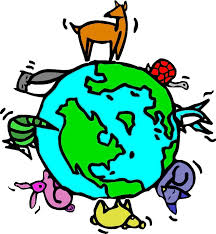Free GIS Data- Ecology

Ecology Data
- Atlas of the Biosphere: Raster maps of environmental variables including soil pH, potential evapotranspiration, average snow depth and many more.
- Lifemapper: Species distribution maps – both recorded and predicted (based on climate, terrain and land cover). Covers a huge number of species. *Data is available by clicking on Species, searching for a species and then clicking on the number of points and choosing the SHP link at the top. Alternatively, web services are available.
- WWF World Ecoregions: Shapefile of ecoregions as defined by the WWF Conservation Science Program.
- Anthropogenic Biomes: Ecosystem unit maps derived from human interactions with ecosystems creating ‘anthropogenic biomes’. Gridded data at 5 arc-seconds available.
- Amphibian Species Distribution Grids: Approximately 1km resolution gridded data showing species distribution. One file per species.
- Net Primary Productivity: Gridded Net Primary Productivity data across the globe, including a novel measure of ‘Human Appropriation of NPP’ measuring how much of the NPP of an area humans are using.
- World Soil Information: Gridded datasets covering the world’s soils at a maximum resolution of 5 arc-minutes with 22 attributes for each cell including organic carbon content, gypsum content, water capacity etc. Data is given for topsoil and subsoil. More detailed datasets for individual countries and continents are available.
- Harmonized World Soil Database: Combining regional and national soil databases and maps from many countries under the Land Use Change programme of the UN FAO. Includes soil units and parameters (such as pH, depth, and texture) and is at a resolution of 30 arc-seconds.
- ERS/MetOp Soil Moisture: 25-50km resolution soil moisture data from satellite scatterometer measurements.
- Global High Resolution Soil Water Balance: Raster data containing actual evapotranspiration and soil water deficit with a resolution of 30 arcseconds (approx 1km).
- Global Carbon Storage in Soils: Gridded carbon storage in soils for the world, from the World Resources Institute.
- ReefBase GIS: GIS data about coral reefs worldwide, including extensive attribute data.
- Human Impacts to Marine Ecosystems: Data from the National Center for Ecological Analysis and Synthesis on human impacts to marine ecosystems. Includes fishing impacts, ocean acidification, sea surface temperature, pollutants and more.
- Carbon Dioxide Information Analysis Center: All data products from this center are available for download, including atmospheric CO2 concentrations (including the famous Mauna Loa dataset), precipitation data, long-term modelling data and more.
- UNEP WCMC: Variety of datasets from the United Nations Environment Programme including global wetlands, global distribution of coral reefs, mangrove distributions and more.
- Aquamaps: Standardised distribution maps for over 11,000 species of fish, marine mammals and invertebrates. *Data available for download under High Resolution Maps and Environmental Data links.
- Terrestrial Ecoregions of the World: Vector data showing a biogeographic classification of terrestrial ecological regions across the world.
- Freshwater Ecoregions of the World: Vector data showing a biogeographic classification of freshwater ecological regions across the world.
- Marine Ecoregions of the World: Vector data showing a biogeographic classification of marine ecological regions across the world.
- BioFRESH: Contemporary distributions of freshwater species, mapped in vector format across the world.
- World Spatial Database of Protected Areas: Global vector database of marine and terrestrial protected areas. Rather complicated to download from – instructions at bottom of linked page.
- IUCN 2013 Red List: Set of shapefiles produced by the IUCN showing the distribution of endangered species of plants and animals across the world.
Note: The author did not suggest data accuracy or correctness. Data may be inaccurate or wrong.
Categories:
Uncategorized











